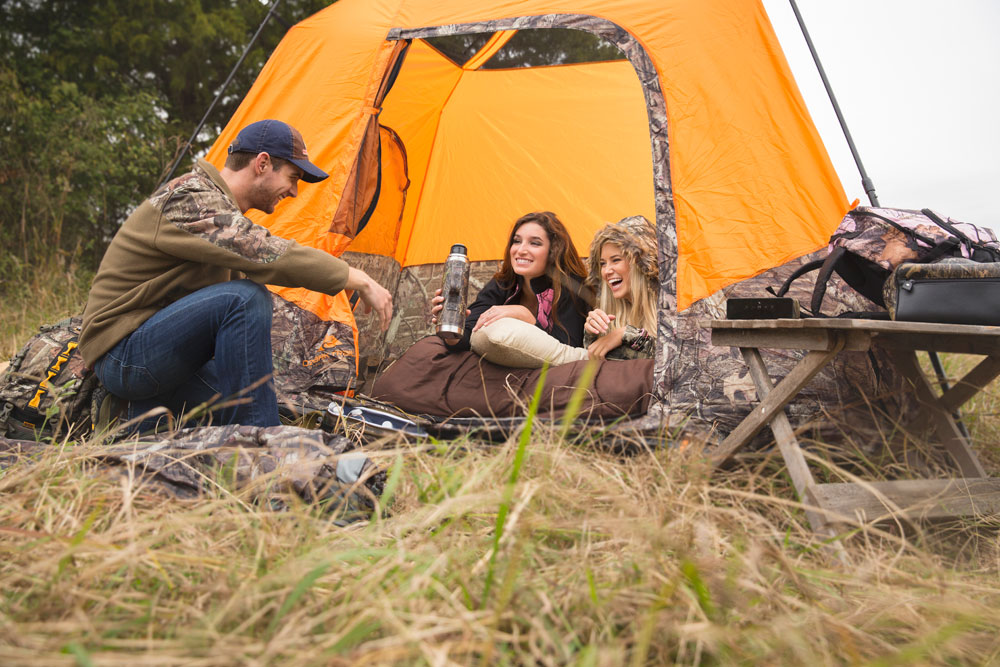Post-hiking fatigue is a real phenomenon. Many seasoned hikers refer to it as the “hiking hangover” and, if you’re not careful, undernourishment or dehydration can lead to feeling a little worse for wear the following day. However, there are several ways that you can set yourself up for sustained energy before, during, and after your hike. Use these eight tips as your hiking recovery cheat sheet.
1. Prepare with Your Limits in Mind
This is where it’s important to be real with yourself. Ask yourself what you can do to troubleshoot any major issues on the hike. If you struggle on occasion with knee pain, pack a knee brace and some ibuprofen. If you struggle with blisters, pack blister-specific Band-Aids or moleskin padding. If you frequently battle cold hands or cold feet, pack hand or toe warmers.
These small adjustments can help make your trip much more comfortable, but they also maximize your safety and the safety of the group. For instance, if you go for a hike on a cold and windy day, pausing for long periods due to excessive knee pain can drastically increase the risk of hypothermia. By preventing minor issues, you also help prevent major issues.

2. Eat a Good Meal Before You Hike
While you don’t want to feel weighed down, it’s crucial to eat a good meal before you head out on your hike. A good meal gives you lasting, sustained energy. Opt for a few fruits or vegetables, whole grains, protein, and healthy fats. This is especially important if you’re hiking with children.
An example of a good meal is oatmeal made from whole-grain oats coupled with a few almonds, berries or dried fruit, and a hard-boiled egg or some bacon. This can help keep you fueled throughout the day.
3. Drink Before You Get Thirsty
Try to drink before you get thirsty and eat before you get hungry. Remember to pack more water than you think you need. Everyone is different, but, in general, estimate one liter of water per three hours in moderate temperatures for adults.

4. Do Not Skimp on Food During the Hike
Food is essential for your hike. As you move continuously throughout your adventure, replenish nutrients to keep fatigue at bay. A combination of simple sugars, protein, low glycemic index carbohydrates, fiber, and fats are great ingredients for hiking recovery food. Some examples include:
- Dried dates. Dates provide you with a slow-release, low-glycemic, energy-dense snack that also is full of fiber.
- Cooked crispy bacon. Cooked-‘til-crispy bacon is the economical man’s jerky. Loaded with protein, it’s both lightweight and easily carried.
- Whole-grain crackers and peanut butter. The slow-release, whole grain energy coupled with peanut butter’s fat and protein provides you with long-lasting energy.
- Trail mix gives you a powerful combination of simple sugar, protein, and fat.
- Cheese provides you with a combination of fat and protein to help keep you feeling full and provide you with long-lasting energy. Choose aged options, as these keep the longest.
- Sliced apples provide a quick-but-healthy sugar boost for whenever your energy stores feel a little low. The fiber doesn’t hurt, either.
5. Choose Supportive Footwear
To prevent blisters and sprained ankles as much as possible, opt for supportive and comfortable footwear. For most people, this means wearing waterproof boots with ankle support.
These boots perform the twin task of keeping your feet dry (helping to prevent blisters) and protecting your ankles and other joints from injury. Remember that the body is a chain of joints and, if you sprain your ankle, your bad knee is much more likely to be affected.
6. Let Your Feet Relax
After your hike, remove your boots and allow your feet to relax. Your supportive footwear protects you from injury, but it is also restrictive. Your hard-working feet deserve a chance to be warm, dry, and free.

7. Don’t Overpack
Bring what you need for safety and comfort and nothing more—simple as that.
8. Stretch
Stretching isn’t just for yoga-loving hippies; it’s crucial to optimal performance in the gym or out on the trail. Attempt to stretch for at least five to ten minutes before and after your hike to prevent unnecessary strain, stiffness, or injury.
Focus on your calf muscles, your hamstrings, your quadriceps, your hips, your back, and your shoulders. Perform the following routine before and after your hike:
- Calf stretch - Lean against a wall or tree and step back with one foot, keeping the toes facing forward. Press the back heel into the floor and attempt to straighten your leg.
- Toe touch - Just like in gym class, try to keep your legs straight or slightly bent as you reach toward your toes. Focus on hinging from your hips rather than your back to stretch your hamstrings well.
- Quadricep stretch - With your left hand on a tree for balance, reach your right hand back and grab your right foot. Pull your foot toward your buttocks and focus on keeping your hips square.
- Butterfly stretch - Find a flat, dry spot and sit on the ground. Bend your knees, bring your feet together, and pull your heels back toward your groin. Lean forward as far as you can, pushing down on your knees with your elbows. This loosens up your hips for hiking.
- Upward dog - Okay, this is a yoga stretch, but it’s good for stretching out your back and abdominals before or after a long day. Lie down on the floor, face down. Next, press up with your hands and lift your chest.
Conclusion
Hiking is one of life’s finest pleasures. Paired with hunting or camping, it makes for an immersive outdoor experience, allowing outdoorsmen to become more familiar with the local landscape, ecosystem, and game populations. As with any other outdoor pursuit, a little bit of preparation and forethought can go a long way in helping you reach your goals with safety and efficiency.
Mossy Oak Wellness products are designed with that singular goal - to help you get the most from your time outdoors. Our passion for helping people get closer to nature has led us to develop innovative, new products built to not only motivate and inspire you to pursue your best life outdoors but to help you feel better while you’re out there.































